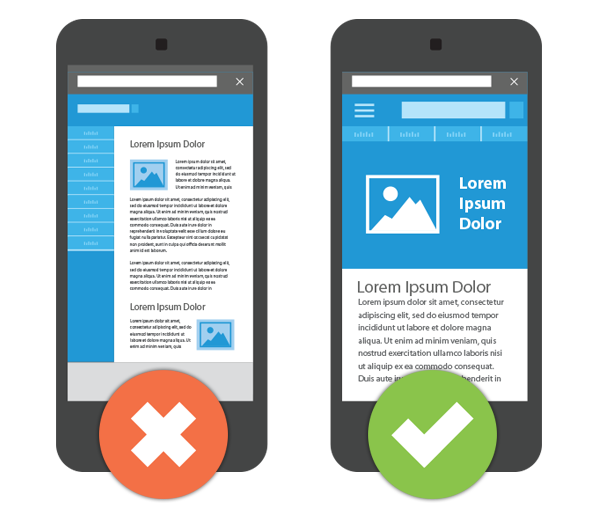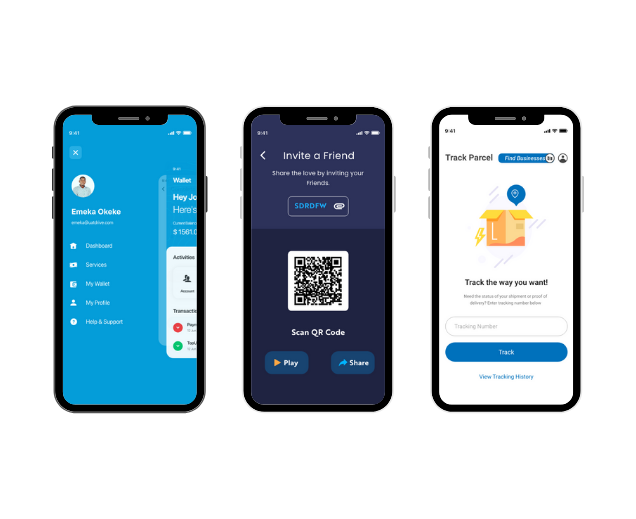Most of the world uses smartphones — this is how the Strategy Analytics study showed. According to analysts, in 2021, the number of mobile device users reached 4 billion people, and the numbers continue to grow.
What does it mean for business? The most direct thing is that regardless of the industry, every company should literally be on the phone with its customers.
You can access the audience's smartphones through the app or through the mobile version of the sites. The article analyzes the advantages of both options, as well as recommends how to make the right choice.
Mobile layout

The layout for smartphone screens is necessary to let the users open the browser and see the correct content of the page. You will immediately understand if you get to a not adapted resource: small buttons, it is difficult to get a finger on a link or find a menu. The images will be of a strange size, the margins and text will be absurdly dispersed.
The user will close the tab with such a site faster than the company logo will load.
A mobile site is a useful thing, but it can only close a narrow pool of tasks. The layout is ideal if you need to give information about the company, services and place a contact form. But if the project has serious intentions, it is better to consider native development on iOS or Android. In 2022, users spend 18 times more time in apps than on mobile sites.
Mobile application development
A native mobile application is a program that is written specifically for the platform: iOS or Android. Original technologies, languages and libraries are used for this.
You can implement almost any ideas and business needs inside the application.

Native development advantages
High performance and operation speed
This is especially evident when the signal weakens: the mobile layout may simply not be displayed, while the mobile application will continue to work.
This is because the mobile layout is completely downloaded from the Internet (pictures, elements, etc.), and the native mobile application receives only data from the network, drawing takes place on the device.
Can work offline
The mobile application will be able to view services, addresses, phone numbers, as well as any other data depending on the project. Once without a network, people will be able to use the company's services and will be in touch.
The mobile layout simply will not load in the absence of the Internet, and contact with users simply will not take place.
High-quality users' experience
The fact that user experience is important is being talked about at everywhere and all the time. But what does it really mean?
The system should be simple and clear — wherever the user wanders, it should be easy for him or her to do the right action: find the menu, place an order or return to the previous screen.
The better people feel on the site or app, the more willing they are to pay for services. Positive user experience equals sales.
So, in a native application, you can implement a lot more scenarios in which the user reaches the board. In the mobile version, from this point of view, the functionality is very limited.
An opportunity to remind about yourself
No website provides such an option as push notifications. You can remind yourself even when the application is closed. You can also enable notifications on websites, but they will not reach the user if he closes the browser.
A well-built push message system increases the indicators many times: from engagement to the average check. Unlike SMS mailings, push notifications are free.
A wider range of user actions
There are some actions in mobile applications by type, like swiping and other things that the user is already used to. He will intuitively perform these actions and see the response of the system. It's all about the positive user experience that we talked about earlier.
In the mobile layout, such actions do not work: the user gets the impression that he does not continue to communicate with the mobile phone, but uses something foreign.
More animation possibilities
In the native mobile application, there is an opportunity to make quite a lot of beautiful animations that will please the client's sight. Users are already used to interactive graphics, because it actively interacts with animation in other applications.
It is difficult to implement interesting animation in mobile layout, the interface looks ascetic, and the client again gets the impression that he is communicating with something foreign.
Access to smartphone functions
If your project needs access to contacts, location, microphone and camera, then it is better to choose a native application.
These opportunities can be used for marketing within the framework of a better understanding of the client and his characteristics, the formation of a portrait and increase personalized sales. There is no such possibility in the mobile layout.
What is important to remember
All over the world, people are using smartphones more and more and prefer applications.
In a good way, every site should have a mobile layout : users who log in through a browser on a smartphone will see a nice picture, not chaotic content.
But mobile sites are very limited in functionality. If a company has a task to do business online, you can't do without an application. Native development allows you to cover almost any business needs.